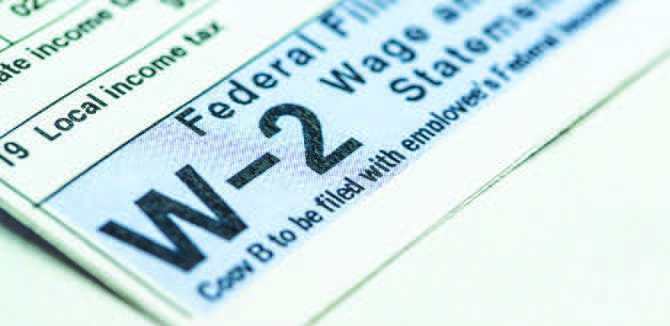Boost morale and save taxes with achievement awards
 Some small businesses struggle with employee morale for a variety of reasons, one of which may be economic uncertainty. If you want to boost employees’ spirits without a big financial outlay, an achievement awards program is a relatively low-cost fringe benefit that may be a win-win addition.
Some small businesses struggle with employee morale for a variety of reasons, one of which may be economic uncertainty. If you want to boost employees’ spirits without a big financial outlay, an achievement awards program is a relatively low-cost fringe benefit that may be a win-win addition.
Under such an initiative, you can hand out awards at an appointed time, such as a year-end ceremony or holiday party. And, as long as you follow the rules, the awards will be tax-deductible for your company and tax-free for recipient employees.
Fulfilling the requirements
To qualify for favorable tax treatment, achievement awards must be tangible items, ranging from a gold watch or a smartphone to a plaque or a trophy, which are granted to employees for either length of service or promoting safety in the workplace. The award can’t be disguised compensation or a payoff for closing a big deal. Examples of awards that would violate the rules are gift certificates, vacations, or tickets to sporting events or concerts.
The awards program also must meet the following three requirements:
- Safety awards can’t go to managers, administrators, clerical workers or other professional employees. Also, an award doesn’t qualify for favorable tax treatment if the company grants safety awards to more than 10% of eligible employees in the same year.
- Any employee can receive a length-of-service award, but the recipient employee must have worked for the business for at least five years to receive one. In addition, an employee is ineligible if he or she received a length-of-service award within the last five years.
- The award must be part of a “meaningful presentation.” That doesn’t mean you have to host a gala awards dinner at the Ritz, but the award should be marked by a ceremony befitting the occasion.
Nonqualified vs. qualified
There are limits on an award’s value depending on whether the achievement awards program is nonqualified or qualified. If you establish a nonqualified program, the annual maximum award is $400. Conversely, the maximum for a qualified program is $1,600 (including nonqualified awards). Any excess above these amounts is nondeductible for the employer and taxable to the employee. If an employee receives multiple awards in one year, these figures apply to the total, not to each individual award.
To establish a qualified program, and therefore benefit from the higher limit, you must meet two additional requirements. First, awards must be granted under a written plan and the plan must be open to all eligible employees without favoritism. Also, it must not discriminate in favor of highly compensated employees as to eligibility or benefits. For 2024, the salary threshold for a highly compensated employee is $155,000.
Awards of nominal value are generally not taxable. These are small infrequent gifts such as a coffee mug, a t-shirt or an occasional meal.
Explore the idea
If an achievement awards program makes sense for your company, you need to ensure that these requirements are met to avoid negative tax consequences. Contact us for guidance in setting up a program that checks all the boxes.
The rise of check kiting and other check fraud
 While the use of paper checks has greatly diminished, thieves still view them as a source for stealing revenue. In fact, the Financial Crimes Enforcement Network warns that many thieves are returning to old-fashioned financial theft, using paper checks. That’s one reason why the U.S. Postal Service urges us to not send checks through the mail, where they may be vulnerable.
While the use of paper checks has greatly diminished, thieves still view them as a source for stealing revenue. In fact, the Financial Crimes Enforcement Network warns that many thieves are returning to old-fashioned financial theft, using paper checks. That’s one reason why the U.S. Postal Service urges us to not send checks through the mail, where they may be vulnerable.
“Check kiting” is one type of fraud that relies on “float time.” That’s the period of delay between when a check is deposited in a bank and when the bank collects the related funds. In recent years, float time has narrowed, but it hasn’t disappeared. Generally, there’s enough delay that unethical businesses can take advantage of that time.
Typically, a check-kiting scheme involves two or more banks, or multiple accounts at one bank. The perpetrator’s goal is to falsely inflate the account balance, allowing checks that would otherwise bounce to clear. This is a federal crime that can result in up to 30 years in federal prison, plus hefty fines. Even if a bank doesn’t press charges, it may close the account and report the incident to ChexSystems, which is similar to a credit bureau.
Strategies for thwarting check fraud
Here are five strategies you can implement to keep people from using your company’s accounts for fraudulent activity, including check kiting.
- Educate employees about bank fraud. Teach them to recognize fraudulent transactions and related red flags. Workers who are aware of suspicious activities can bolster management’s commitment to preventing fraud.
- Rotate key accounting roles. Segregate accounting duties. By rotating tasks among staffers, if possible, you can help uncover ongoing schemes and limit opportunities to steal.
- Reconcile bank accounts daily. Make sure someone trustworthy, who isn’t involved in issuing payments, reconciles every company bank account.
- Maintain control of paper checks. Store blank checks in a locked cabinet or safe and periodically inventory the blank check stock. Also limit who’s allowed to order new checks.
- Go digital. The most effective way to prevent check fraud is to stop using paper checks altogether. Consider replacing them with ACH payments or another form of electronic payments.
The bottom line is, it’s a mistake to assume that check fraud is too old-fashioned to attract the attention of thieves.
Tighten up
Check fraud schemes are somewhat easy to perpetrate, but vigilance in your banking processes can help thwart it. For help tightening your internal controls, contact us.
When is employer-provided life insurance taxable?
 If the fringe benefits of your job include employer-paid group term life insurance, a portion of the premiums for the coverage may be taxable. And that could result in undesirable income tax consequences for you.
If the fringe benefits of your job include employer-paid group term life insurance, a portion of the premiums for the coverage may be taxable. And that could result in undesirable income tax consequences for you.
The cost of the first $50,000 of group term life insurance paid by your employer is excluded from taxable income. But the employer-paid cost of that coverage over $50,000 is taxable to you and included in the taxable wages reported on your Form W-2, even if you never actually receive any benefits from it. That’s called “phantom income.”
Have you reviewed your W-2?
If you think the tax cost to you of employer-provided group term life insurance is too high, you can check your W-2. If there’s a dollar amount in Box 12 (with code “C”), that’s the amount your employer paid to provide you with group term life insurance over $50,000, minus any amount that you paid for the coverage. You’re responsible for any taxes due on the amount in Box 12, including employment tax.
The amount in Box 12 is already included as part of your total “Wages, tips and other compensation” in Box 1 of the W-2. It’s the amount in Box 1 that’s reported on your tax return.
What are your options?
If the tax cost seems too high for the benefit you’re getting, ask your employer if they have a “carve-out” plan, which allows certain employees to opt out of the group coverage. If there’s no such option, ask your employer if they’d be willing to create one.
Carve-out plans vary, but one option is for the employer to continue to provide $50,000 of coverage at no cost to you. The employer could then either provide you with an individual policy for the balance of the coverage, or a cash bonus representing the amount the employer would’ve spent for the excess coverage. You can then use that money to pay premiums for an individual policy.
We can help
You may have other questions about your group term life insurance benefit. Feel free to contact us for answers.
An IRA withdrawal strategy with tax-reducing power
 As the year winds to a close in just a couple of months, your chance to lower your 2024 tax bill also winds down. Certain taxpayers may be able to make qualified charitable distributions (QCDs) to lower their taxable incomes and at the same time, fulfill a few other goals. To be eligible, you must be at least 70 ½ and own, or be the beneficiary of, an IRA. A QCD must be transferred directly from your custodian to an IRS-approved charity.
As the year winds to a close in just a couple of months, your chance to lower your 2024 tax bill also winds down. Certain taxpayers may be able to make qualified charitable distributions (QCDs) to lower their taxable incomes and at the same time, fulfill a few other goals. To be eligible, you must be at least 70 ½ and own, or be the beneficiary of, an IRA. A QCD must be transferred directly from your custodian to an IRS-approved charity.
How a QCD works
If you’re eligible, you can use the funds in your IRA to donate up to $100,000 (indexed annually for inflation) to an IRS-approved charity directly from your IRA. If you’re married and file jointly and your spouse also meets the age requirement, you can donate up to $200,000. Such a donation may fulfill your annual required minimum distributions, if applicable and all rules are met.
A QCD can’t be claimed as part of your charitable contribution deductions. But the amount of your QCD is removed from your taxable income, which may preserve your eligibility for other tax breaks. Also, as an eligible IRA owner, you can make a QCD whether or not you itemize deductions on your Schedule A. You may find that taking the standard deduction works better for your overall tax-reducing strategy.
Normally, distributions from a traditional IRA are taxable when received. To ensure your QCD becomes tax-free, it must be paid from an IRA custodian or trustee, directly to an IRS-approved charity. Don’t take chances. Contact your trusted advisor to nail down the details.
Tax Calendar
October 10 – Employees must report September tip income of $20 or more to employers (Form 4070).
October 15 – Individuals whose personal federal income tax returns for 2023 received an automatic extension must file them no later than today and pay any tax, interest and penalties due. In addition:
- Those with offshore bank accounts must file the Financial Crimes Enforcement Network (FinCEN) Report 114 “Report of Foreign Bank and Financial Accounts” (also known as the “FBAR”), if not filed already. (This report received an automatic extension to today if not filed by the original due date of April 15th.)
- Calendar-year C corporations that obtained an extension should file their 2023 Form 1120 by this date.
- If the monthly deposit rule applies, employers must deposit the tax for payments in September for Social Security, Medicare, withheld income tax and nonpayroll withholding.
October 31 – Employers must file Form 941 for the third quarter of 2024 (November 10 if all taxes are deposited in full and on time). Also, employers must deposit FUTA taxes owed through September if the liability is more than $500.
November 12 – Employees must report October tip income of $20 or more to employers (Form 4070).
November 15 – Calendar-year tax-exempt organizations that obtained an exemption should file their 2023 returns. In addition:
- If the monthly deposit rule applies, employers must deposit the tax for payments in October for Social Security, Medicare, withheld income tax and nonpayroll withholding.
December 10 – Employees must report November tip income of $20 or more to employers (Form 4070).
December 16 – Calendar-year corporations must pay fourth quarter 2024 estimated tax payments. In addition:
- If the monthly deposit rule applies, employers must deposit the tax for payments in November for Social Security, Medicare, withheld income tax and nonpayroll withholding.
About Batley CPA
Batley CPA, LLC is a full-service CPA firm providing tax, accounting, payroll and advisory services to businesses and individuals throughout Green Bay and the Fox Cities. Batley CPA regularly provides clients with best practices and strategies to maximize cash flow, profit, reduce taxes, manage costs and risk, and bring meaning to financial and operational data. The company has offices in Appleton, Neenah and Green Bay.

